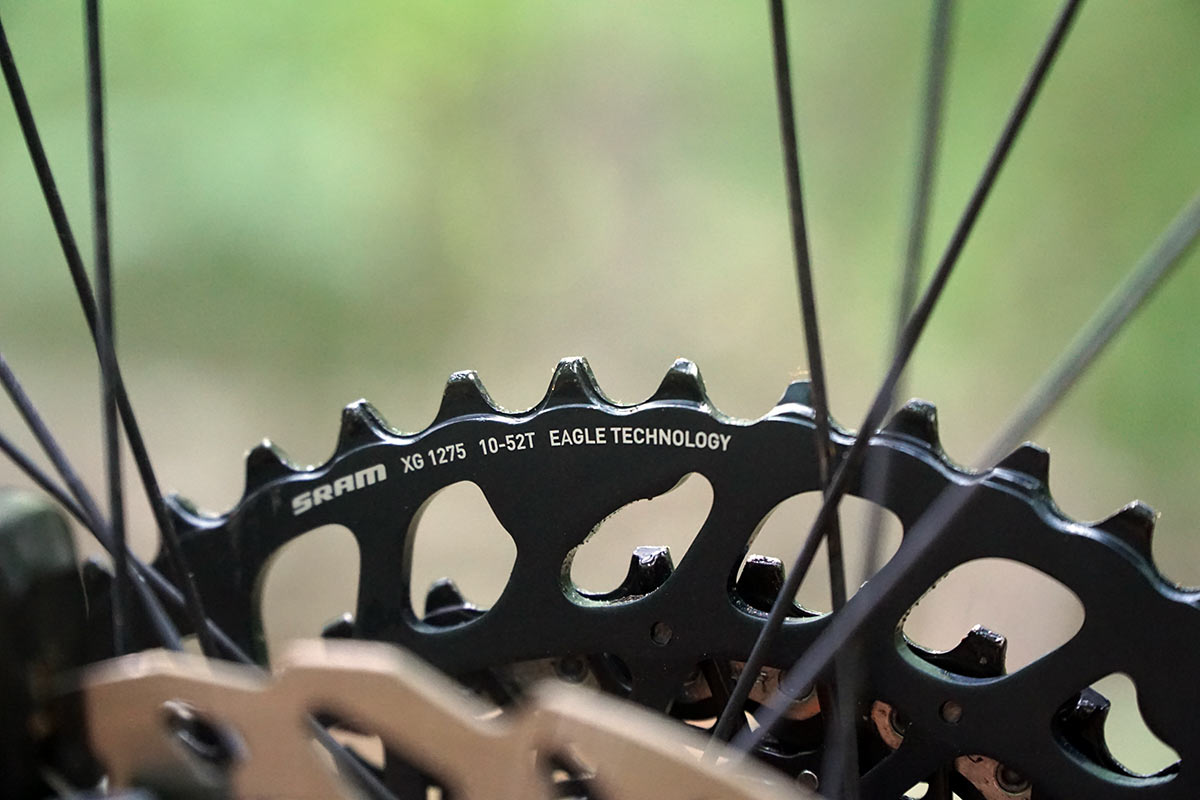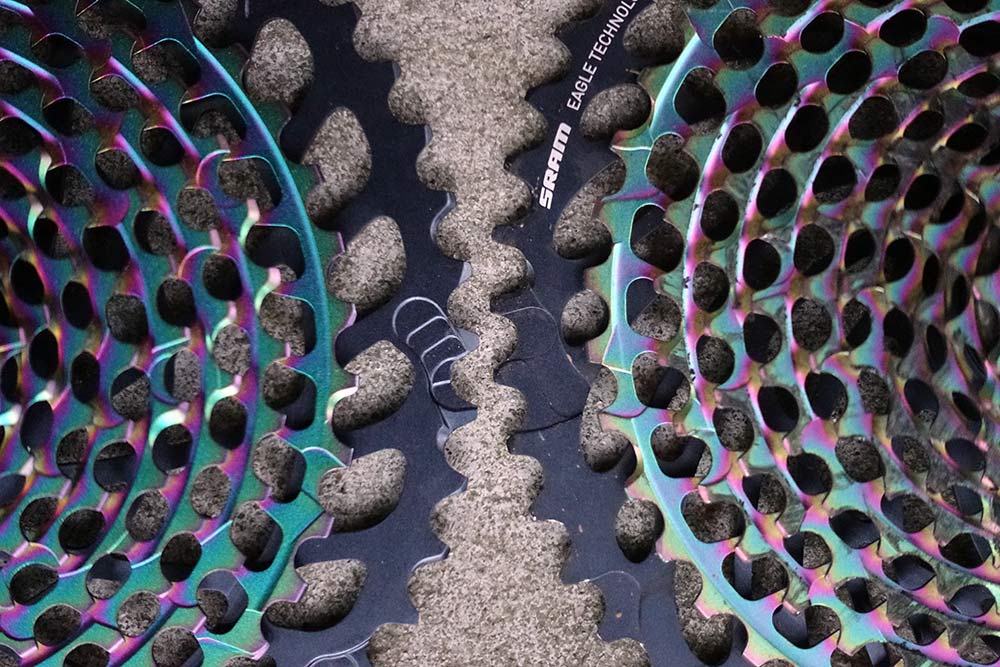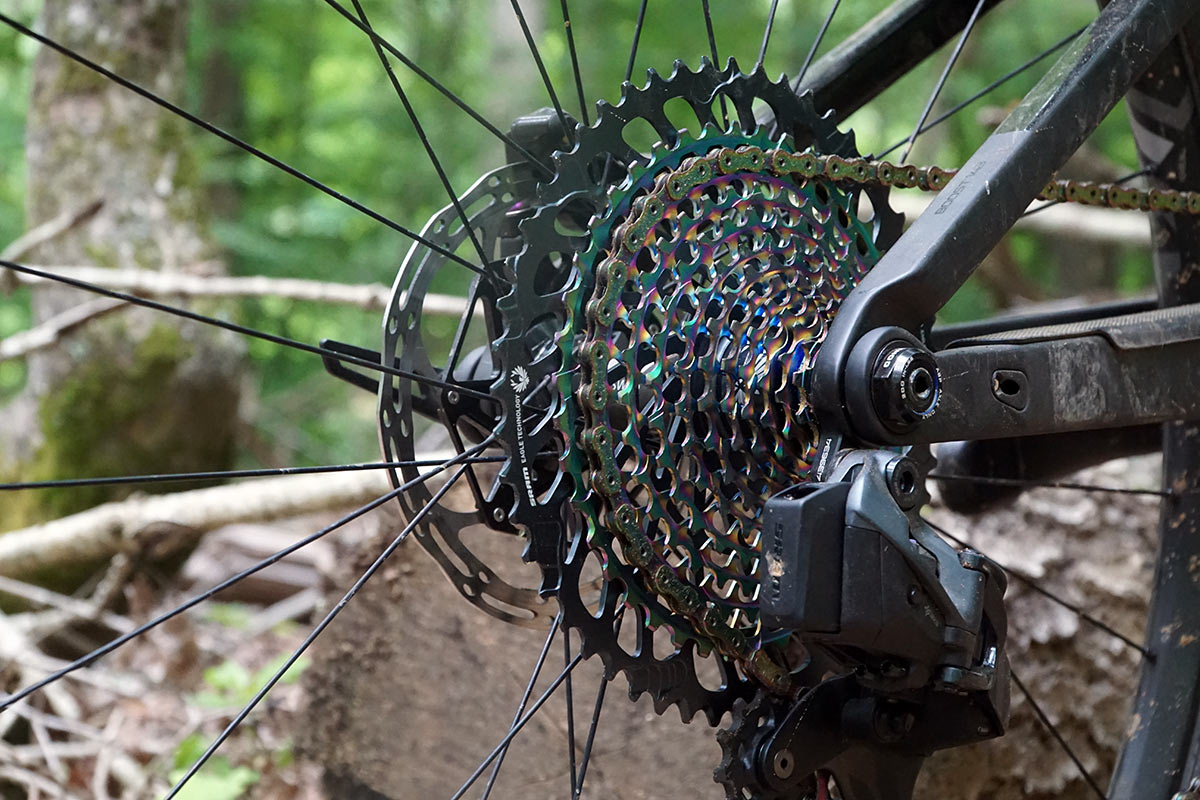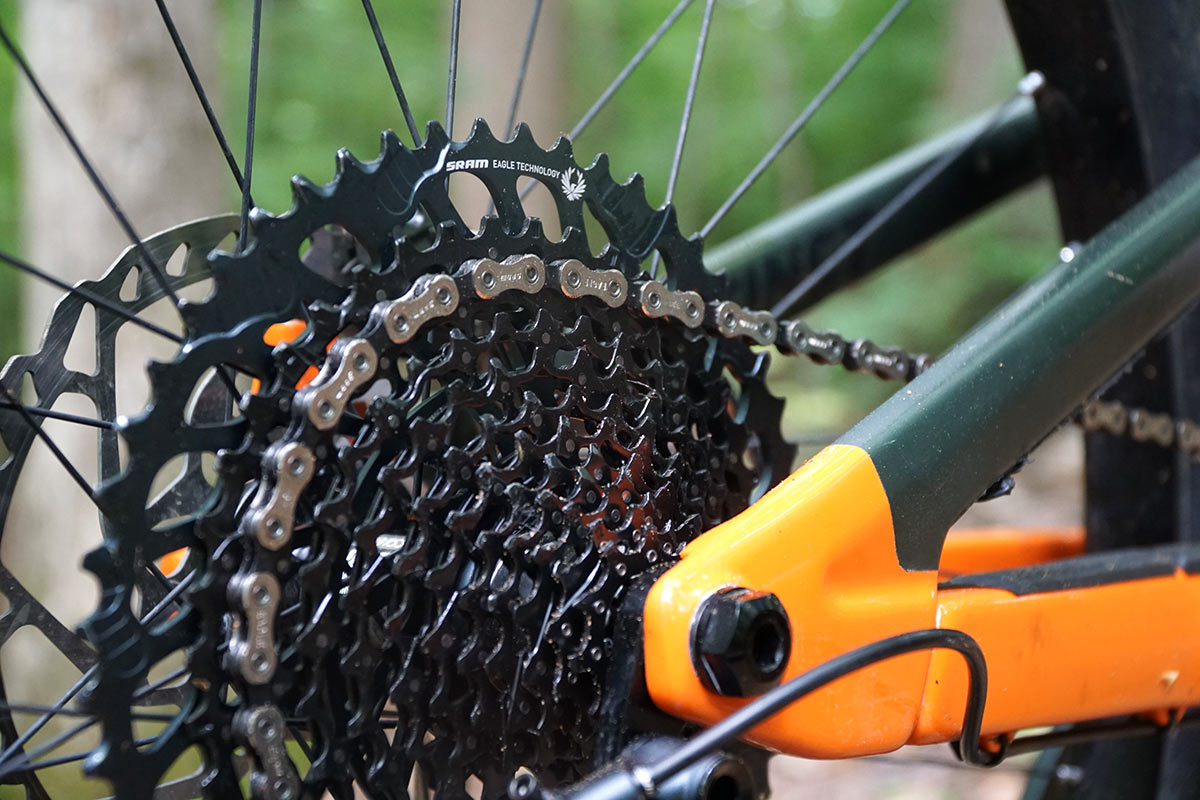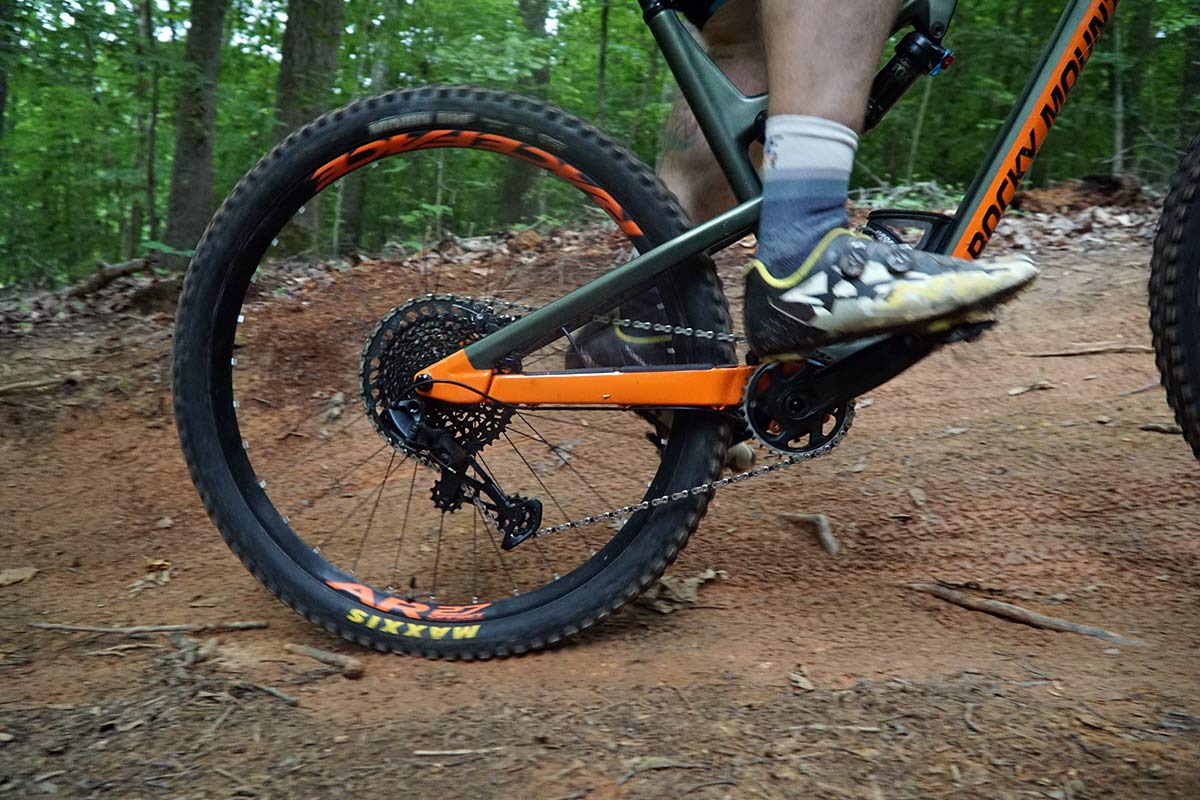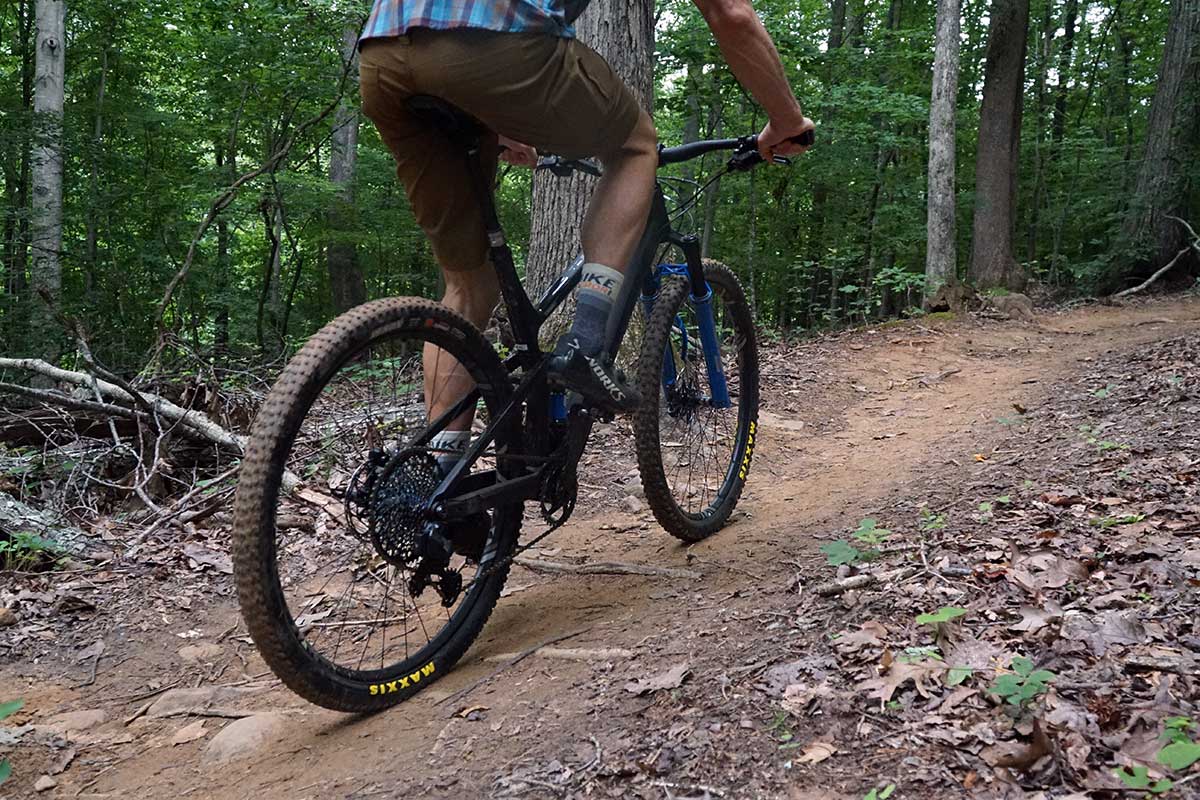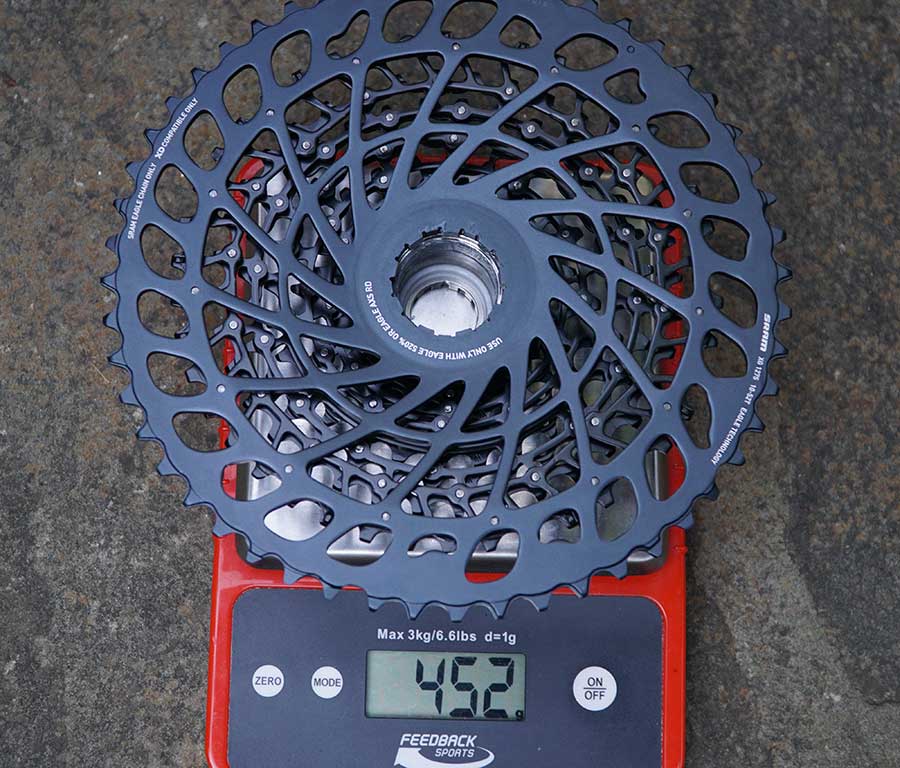When you need a bailout gear, you really need a bailout gear. Or so was the thinking behind the new SRAM 10-52 Eagle cassettes. The new, wider 520% range cassette options will be available for GX, XO1 and XX1 groups, mechanical and AXS.
For the wireless shifting AXS groups, you can just throw the cassette on there and ride. For mechanical Eagle groups, you’ll need a new derailleur for optimum compatibility. Here’s everything you need to know about the new cassettes, derailleurs and how to upgrade…
Is it really just a bigger cog?
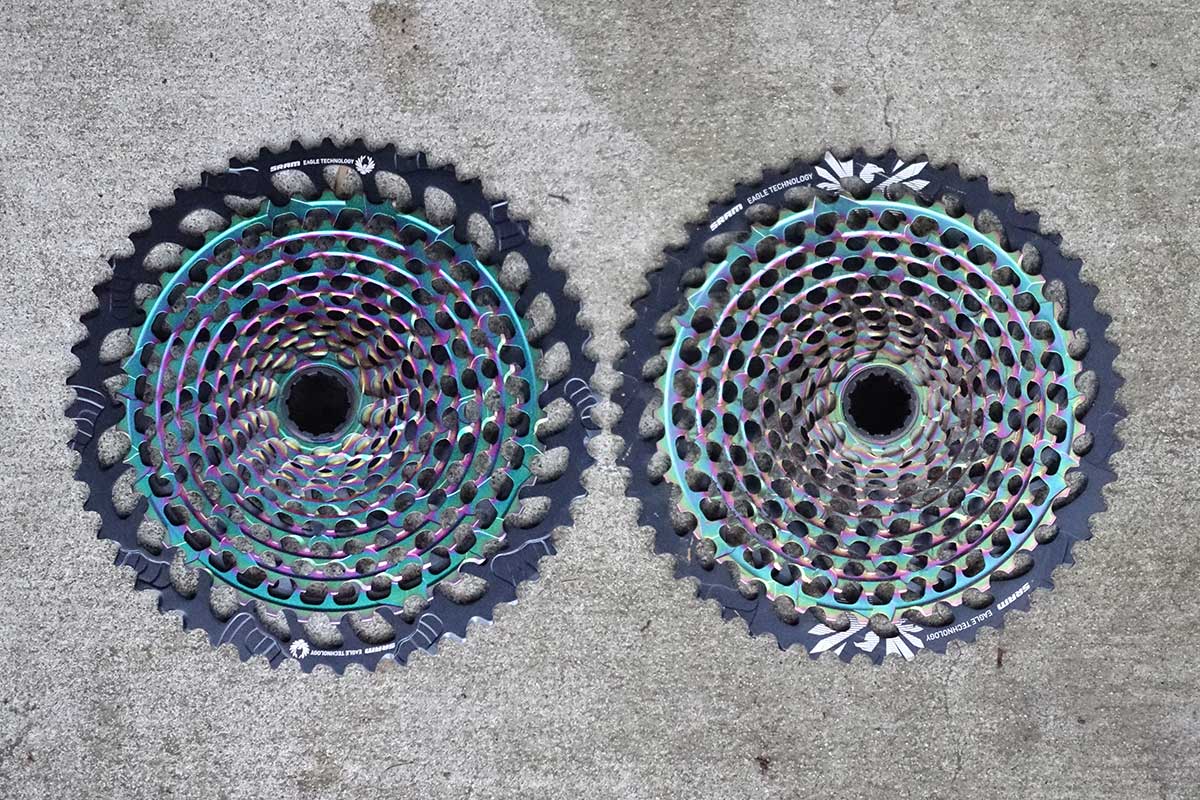
Yep. That’s the short of it. The rest of the cassette remains the same, going from 10 to 42. The original 50-tooth cog simply grows to 52 teeth, if you want it.
They’ll still offer a 10-50 Eagle cassette, plus this new 10-52 Eagle cassette.
The wireless Eagle AXS rear derailleurs are already compatible with it. This larger cassette was in development (or at least conceived) when they developed the electronic mountain bike group, so they built compatibility into it.
For mechanical rear derailleurs, since those launched way back in 2016 with XX1 and XO1, they were designed only with the 50-tooth large cog in mind. So, technically, you’ll need a new Eagle mechanical rear derailleur to go with the wider 10-52 cassette…if you want the best possible performance.
Will the original Eagle derailleur work with the new 10-52 cassette?
Technically…the answer is mostly, maybe. Mostly, in that the bottom part of the cassette hasn’t changed at all. We’ll be testing how the original derailleurs shift into the 52 and reporting back shortly.
The maybe is that SRAM’s official statement is that the new derailleurs have new, improved cages that are optimized for the larger 52-tooth cogs. They use some super soft language that basically translates to this: You could probably use your original Eagle rear derailleur with the new 10-52, but it may have a rough shift going from the 42 to the 52.
Our take: Why not try it? Then upgrade your rear derailleur if necessary. Or just put a smaller chainring on the front if you really need easier gearing, then just wait until you upgrade your complete group or bike. Because…
520% Eagle derailleurs will start coming on everything
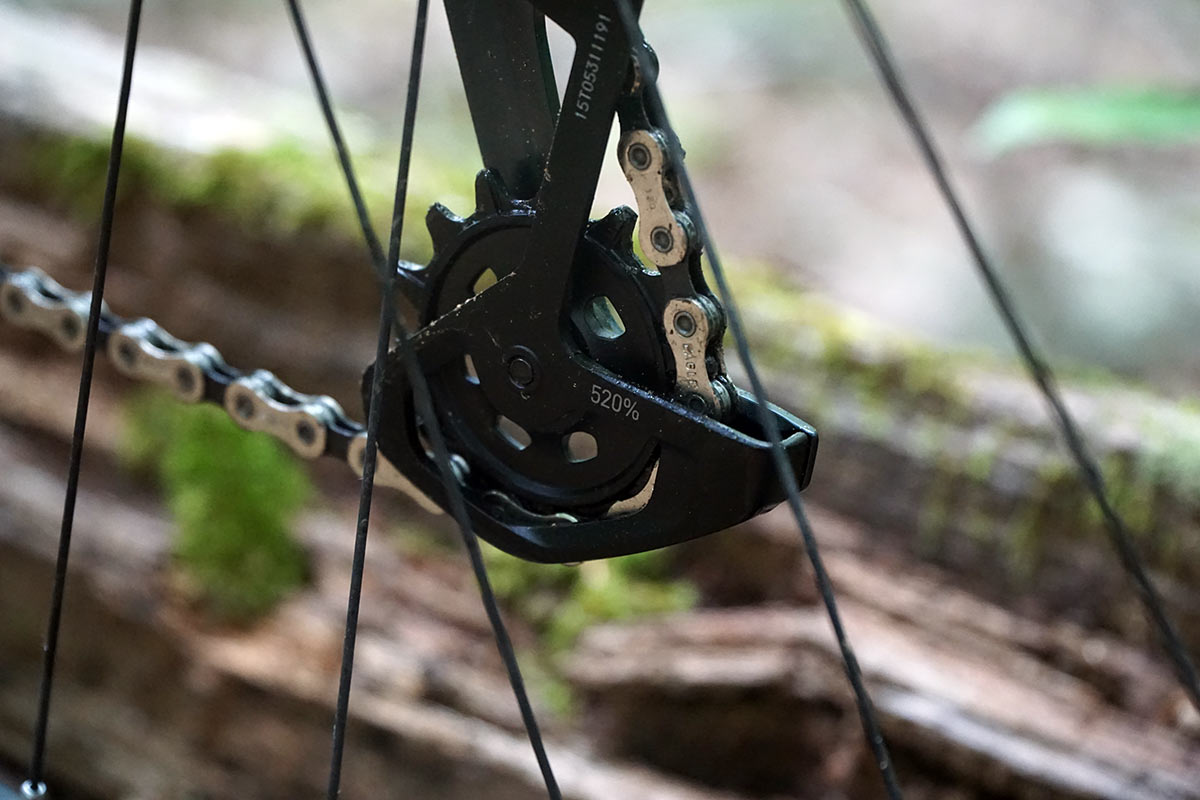
Like that new Ibis Mojo 4, which almost jumped the gun on revealing this when it launched on Tuesday.
The 520% rear derailleur is backward compatible with the 500% range 10-50 cassette, too. So there’s no reason to buy or spec the 500% derailleur on anything. We suspect any new bike shipping with a SRAM GX, XO1 or XX Eagle group will come with the newer derailleurs.
But you can always check the back of the pulley cage to see…it’ll say 500% (for 50-tooth) or 520% (for 52-tooth) to indicate its maximum cog size compatibility.
Like before, all levels of Eagle, with certain exceptions for SX and NX groups, are interchangeable. So, you could go for the lighter XO1/XX1 cassettes while running the more affordable GX shifting parts.
Speaking of GX Eagle, they’ve completely redesigned that group. Check out all the details on that, plus a new Copper colorway for Eagle, in this post.
Can I put the new Pulley Cage on my Eagle derailleur?
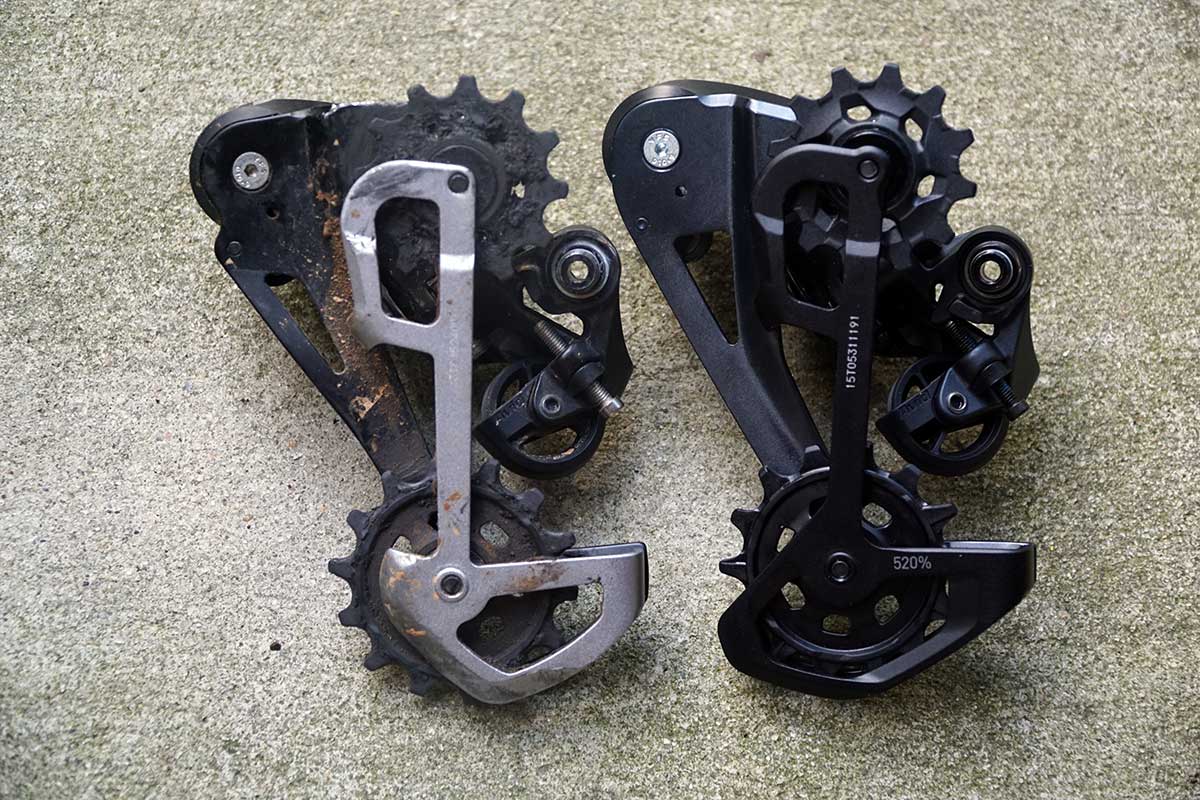
That’d be nice, wouldn’t it? SRAM thought of it, tested it, and almost did offer those as an aftermarket upgrade kit. But longer term testing showed that long term durability might be an issue since there are unknowns.

You know, unknowns like not knowing who would be installing the new cage and what their skill level was. So, for the same reason they aren’t officially recommending that you use your old derailleur with the new cassette, they’re not offering an upgrade kit: Because they want their drivetrains to perform flawlessly, and they can’t guarantee that if parts start getting modified or mixed and matched outside of official recommendations.
SRAM Eagle 520% ride review & Slow Motion shifting video
We’ve been riding the new XX1 10-52 with AXS, and the new GX group’s mechanical shifting, for a few solid rides prior to launch. Our verdict? It’s as good as ever.
What surprised us was how smoothly both groups shift across that massive 10-tooth gap at the top. Whether pedaling along lightly (which never happens in the real world when you actually need to shift into a massive cog like this) or cranking it in there under load on a climb, it was quick and precise.
Watch the video to see it shifting in and out of the 52-tooth cog in slow motion, along with a few shifts while climbing. You’ll also get a good look at that new GX group.
Honestly, there’s not a lot to say other than:
- It’s a bigger cog that makes climbing even easier
- Both wireless AXS and mechanical derailleurs handled the shift smoothly
- It doesn’t add much weight, so there’s virtually no downside to opting for the 10-52
- It’s a bit of a bummer that mechanical groups aren’t technically compatible, but we’ll see about that soon…
The takeaway? If you have an AXS-equipped bike and you want an easier gear and don’t mind dropping the coin for a new cassette, go for it. Otherwise, as an upgrade option, it makes more sense to get it on your next bike, or use it as an excuse to go ahead and upgrade more of your drivetrain.
Eagle 10-50 versus 10-52 actual weight comparison
The original XX1 10-50 cassette weighs in at 363g, and the new XX1 10-52 cassette weighs 373g. So, just 10g more for the larger cog. Check out the actual weights for every Eagle AXS and Eagle XX1/XO1 group component, too.
The GX group’s original Full Pin cassette, which uses a pinned construction rather than the one-piece machined base structure of the higher end cassettes, weighed in at 448g. The new 10-52 cassette comes in at 452g, just 4g heavier.
